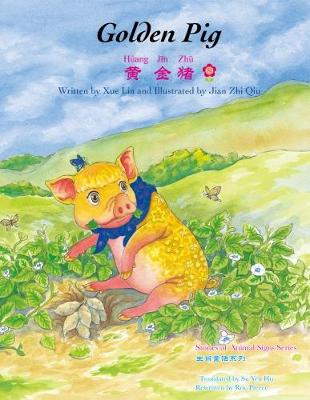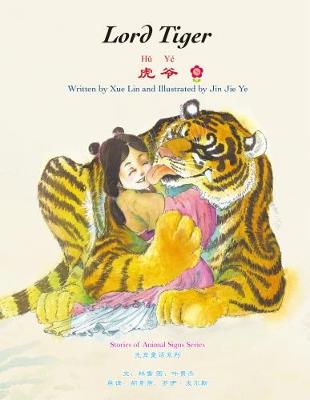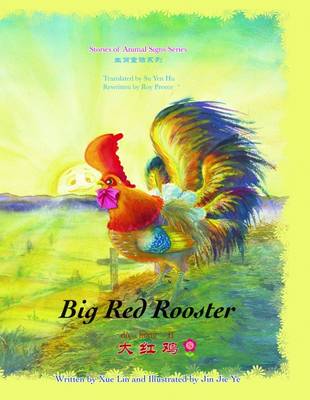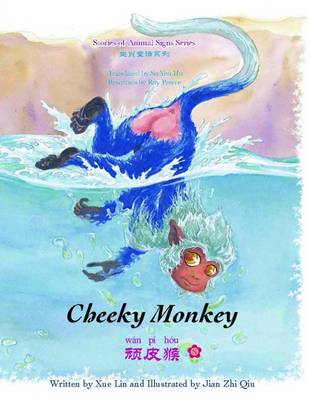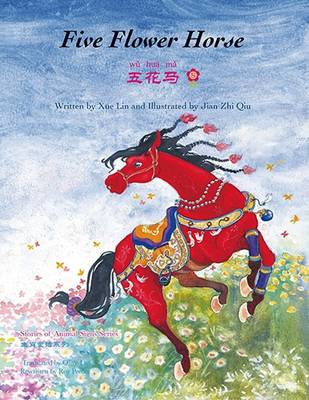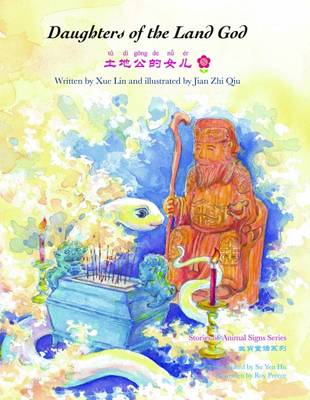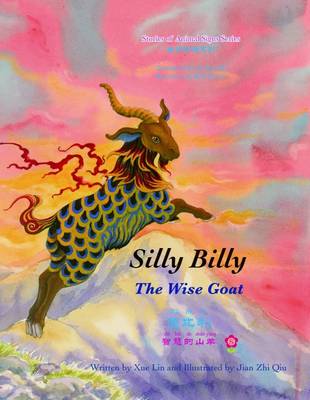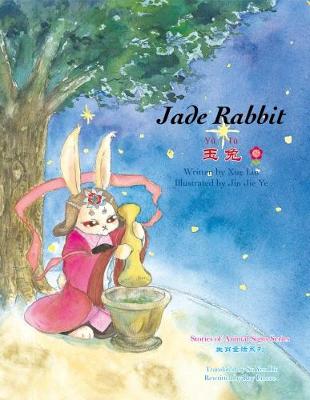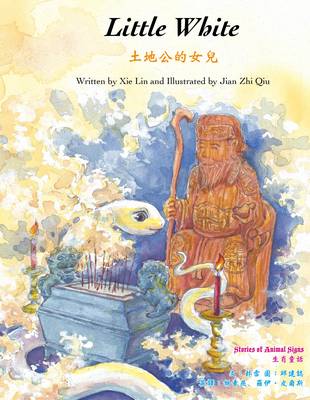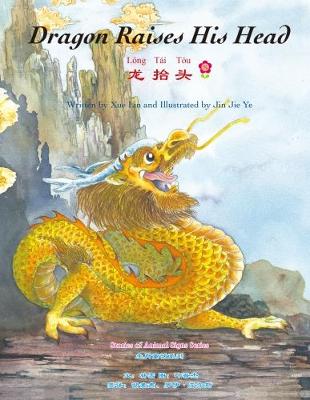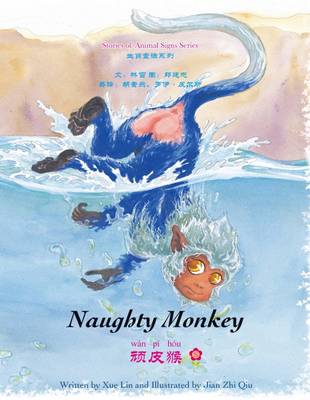Stories of Animal Signs
13 total works
When the Rain God is sent to drag Ox back to the heavens, Ox makes the supreme sacrifice of his life to give rice and young oxen to the people on earth. As with all Chinese traditional animal stories, their deceptive simplicity is a vehicle for displaying the richness and variety of human character and feeling; Chinese believe the animal year of a person's birth influences character; the animals in these legends display to some extent their respective zodiac qualities, in this case sympathy, kindness and quiet courage for a just cause. The myth may also be seen as a folk memory of the transition from a hunter-gatherer society to an agrarian one, and the patient oxen still plough the rice fields in China.This is an entirely new version of the old legend, re-written in simple English, suitable for reading to or by young children, or by older children learning Mandarin. The complete text is bi-lingual with colour coded key words and a Mandarin-English vocabulary. The parallel text in Pinyin, using the Roman alphabet, enables readers to pronounce the Chinese characters. Purchase of the book allows access to an animated e-book with audio in English and/or Chinese.Production quality is high, with good quality paper and colour, original full colour illustrations by Chinese artists on every page and traditional binding.
One day Golden Pig is digging for food as usual when she discovers some valuable rock salt. This makes everyone very rich and happy. Golden Pig is persuaded to enter for the Jade Emperors Race of Animals, but as usual she stops to eat fallen fruit and anything she sees. At last, as everyone shouts encouragement, she jumps and rolls over the finish just in twelfth place, so the twelfth and last Chinese Year is the Year of Pig.As with all Chinese traditional animal stories, their deceptive simplicity is a vehicle for displaying the richness and variety of human character and feeling; Chinese believe the animal year of a person's birth influences character; the animals in these legends display to some extent their respective zodiac qualities. Golden Pig is at first disliked because she seems self-centred, but she is good natured, and in her own disorganised way she brings a lot of good to everyone, so she is popular in the end.This is an entirely new version of the old legend, re-written in simple English, suitable for reading to or by young children, or by older children learning Mandarin. The complete text is bi-lingual with colour coded key words and a Mandarin-English vocabulary.
The parallel text in Pinyin, using the Roman alphabet, enables readers to pronounce the Chinese characters. Purchase of the book allows access to an animated e-book with audio in English and/or Chinese.Production quality is high, with good quality paper and colour, original full colour illustrations by Chinese artists on every page, and traditional binding.
But, with the magic of the god of the mountain, the sincere tears of Little Lotus falling onto Plate Gourd heal him in turn, and he becomes a human being. Interestingly, legends of the ancient Yao and She mountain people in China say they are descended from a mythical dog called Panhu, meaning Plate-Gourd.As with all Chinese traditional animal stories, their deceptive simplicity is a vehicle for displaying the richness and variety of human character and feeling; Chinese believe the animal year of a person's birth influences character; the animals in these legends display to some extent their respective zodiac qualities, in this case the combination of caring with courage and loyalty.This is an entirely new version of the old legend, re-written in simple English, suitable for reading to or by young children, or by older children learning Mandarin. The complete text is bi-lingual with colour coded key words and a Mandarin-English vocabulary. The parallel text in Pinyin, using the Roman alphabet, enables readers to pronounce the Chinese characters. Purchase of the book allows access to an animated e-book with audio in English and/or Chinese.Production quality is high, with good quality paper, original full colour illustrations on every page and traditional binding.
Doctor Wu and Tiger agree to work together to heal sick people and Lord Tiger becomes known as the "Guardian of Children".As with all Chinese traditional animal stories, their deceptive simplicity is a vehicle for displaying the richness and variety of human character and feeling; Chinese believe the animal year of a person's birth influences character; the animals in these legends display to some extent their respective zodiac qualities, in this case the extremes of wickedness and potential for goodness in one character. It is a story of remorse and redemption. Chinese mothers still leave gifts at the statues of Lord Tiger in the temples, hoping for good health for their children.This is an entirely new version of the old legend, re-written in simple English, suitable for reading to or by young children, or by older children learning Mandarin. The complete text is bi-lingual with colour coded key words and a Mandarin-English vocabulary. The parallel text in Pinyin, using the Roman alphabet, enables readers to pronounce the Chinese characters. Purchase of the book allows access to an animated e-book with audio in English and/or Chinese.Production quality is high, with good quality paper and colour, original full colour illustrations by Chinese artists on every page and traditional binding.
During the race Rabbit comes across many sick people and uses her knowledge of medicine to cure them. Rabbit uses many disguises in her work, but one day she is very tired and falls asleep, when her disguise fades away and the grateful people discover she is only a rabbit after all.As with all Chinese traditional animal stories, their deceptive simplicity is a vehicle for displaying the richness and variety of human character and feeling; Chinese believe the animal year of a person's birth influences character; the animals in these legends display to some extent their respective zodiac qualities, in this case Rabbit's kind and self-effacing character which is seen to be worthy of the Moon Lady's instruction. Rabbit uses her knowledge well and her reward is to be respected and loved by everyone. Chinese people still regard Jade Rabbit with affection and pray to her, hoping for good luck and health.This is an entirely new version of the old legend, re-written in simple English, suitable for reading to or by young children, or by older children learning Mandarin. The complete text is bi-lingual with colour coded key words and a Mandarin-English vocabulary.
The parallel text in Pinyin, using the Roman alphabet, enables readers to pronounce the Chinese characters. Purchase of the book allows access to an animated e-book with audio in English and/or Chinese.Production quality is high, with good quality paper, original full colour illustrations by Chinese artists on every page, and traditional binding.
But, the dragon protests, he did bring that rain, under cover of the Animal Race. Now, as punishment, he is condemned to be crushed for ever under a huge rock "Until the yellow beans flower", but no one knows what they are. When the old man tells his villagers, a clever child works out that the yellow bean flowers are pop-corn. The grateful people make lots of pop-corn and the kind dragon is released.As with all Chinese traditional animal stories, their deceptive simplicity is a vehicle for displaying the richness and variety of human character and feeling; Chinese believe the animal year of a person's birth influences character; the animals in these legends display to some extent their respective zodiac qualities, here the courageous dragon disobeys orders to do what he thinks right, but not only is he punished for it, his sacrifice is not at first appreciated by the people. Empress Wu Ze-Tian lived 624-705 CE and it is very likely that any extreme weather may have been blamed on her unusual accession. This is an entirely new version of the old legend, re-written in simple English, suitable for reading to or by young children, or by older children learning Mandarin.
The complete text is bi-lingual with colour coded key words and a Mandarin-English vocabulary. The parallel text in Pinyin, using the Roman alphabet, enables readers to pronounce the Chinese characters. Purchase of the book allows access to an animated e-book with audio in English and/or Chinese.Production quality is high, with good quality paper, original full colour illustrations by Chinese artists on every page, and traditional binding.

